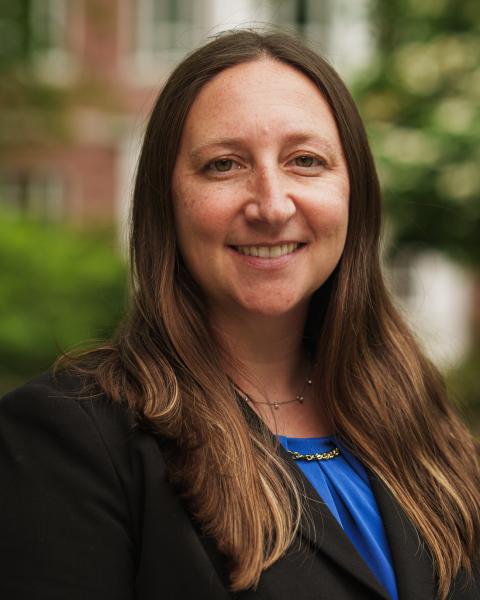Making Use of Real Time

Fire blight, a contagious disease caused by the bacterium Erwinia amylovora, is one of the most destructive orchard threats to apples and pears in New Hampshire.
Warm, humid or rainy weather in the spring and early summer increases the disease’s severity, so some years are worse than others. A critical time for infection is during bloom.
Fortunately, there are a variety of integrated pest management (IPM) strategies that growers can implement to combat fire blight, including the assessment tools and predictive models that help track disease development through the Network for Environment and Weather Applications (NEWA), which can be found at newa.cornell.edu.
Making Informed Decisions
UNH Extension received funding from the New Hampshire Department of Agriculture, Markets and Food Specialty Crop Block Grant Program in 2015 to install NEWA-compatible weather stations in all 10 counties, which means that farmers can monitor fire blight as well as many other diseases using a web-based platform. The goal of these stations is to expand New Hampshire growers’ access to environmental and weather data and real-time predictive models to directly help them make informed decisions about crop pest management.

Data — precipitation, temperature, relative humidity, leaf wetness, solar radiation, wind speed and wind direction — is collected every minute. Some stations also have soil moisture and temperature probes.
The stations are either RainWise or Onset equipment. The data from the stations is first sent to servers of those companies, then “packaged” and sent to the Northeast Regional Climate Center at Cornell University where it is uploaded to the NEWA system (NEWA was established in 1995 by the Cornell University IPM Program).
The environmental data is used in the predictive models for diseases and insect pests. Temperature data is also used to calculate degree days, an IPM tool used to determine the development of insects and pathogens as well as plant growth.
When growers log onto the NEWA website, they can customize their experience by selecting the data and tools applicable to their operations. The website has been utilized by fruit and vegetable growers as well as landscapers and arborists.
Expanding the Network
Until she retired in June 2021, UNH Extension’s plant health state specialist Cheryl Smith served as the NEWA state coordinator for New Hampshire. Smith worked closely with Dan Olmstead, Extension associate and NEWA coordinator at the New York State IPM Program on the initiative.
Smith traveled around the state, climbing ladders to help install the systems. She trained growers on how to use the NEWA website through in-person presentations and online live demos.
She collaborated on the grant with George Hamilton, UNH Extension fruit and vegetable specialist, emeritus (who also retired in June 2021) and Becky Sideman, UNH Extension sustainable horticulture state specialist.
The network continues to grow as more stations are installed throughout the state. Extension was gifted a station in Merrimack beyond the initial 10. George Hamilton received funding for an additional three stations in Hillsborough County and 12 more will be added through a cost-share grant for growers from the Natural Resources Conservation Service. Weather stations at nine airports in New Hampshire also contribute data to NEWA.

The more localized the weather data, the more accurate the predictive models.
Data from these stations have also been used for applications for crop disaster assistance and to help the Department of Environmental Services with drought monitoring.
Following the 2018 and 2019 seasons, 100% of growers surveyed reported that using NEWA pest forecast information alerted them to the risk of damage due to pests and diseases; 95% reported that using NEWA improved the timing of pesticide applications; and 82% reported that using NEWA pest forecast information enhanced their IPM decision-making. Reported savings per acre by using NEWA ranged from $30 to $3,500 per acre.
As growers continue to face threats to their crops – and their livelihoods — Extension will be here, helping tackle challenges, like that pesky fire blight, and offering up solutions.
